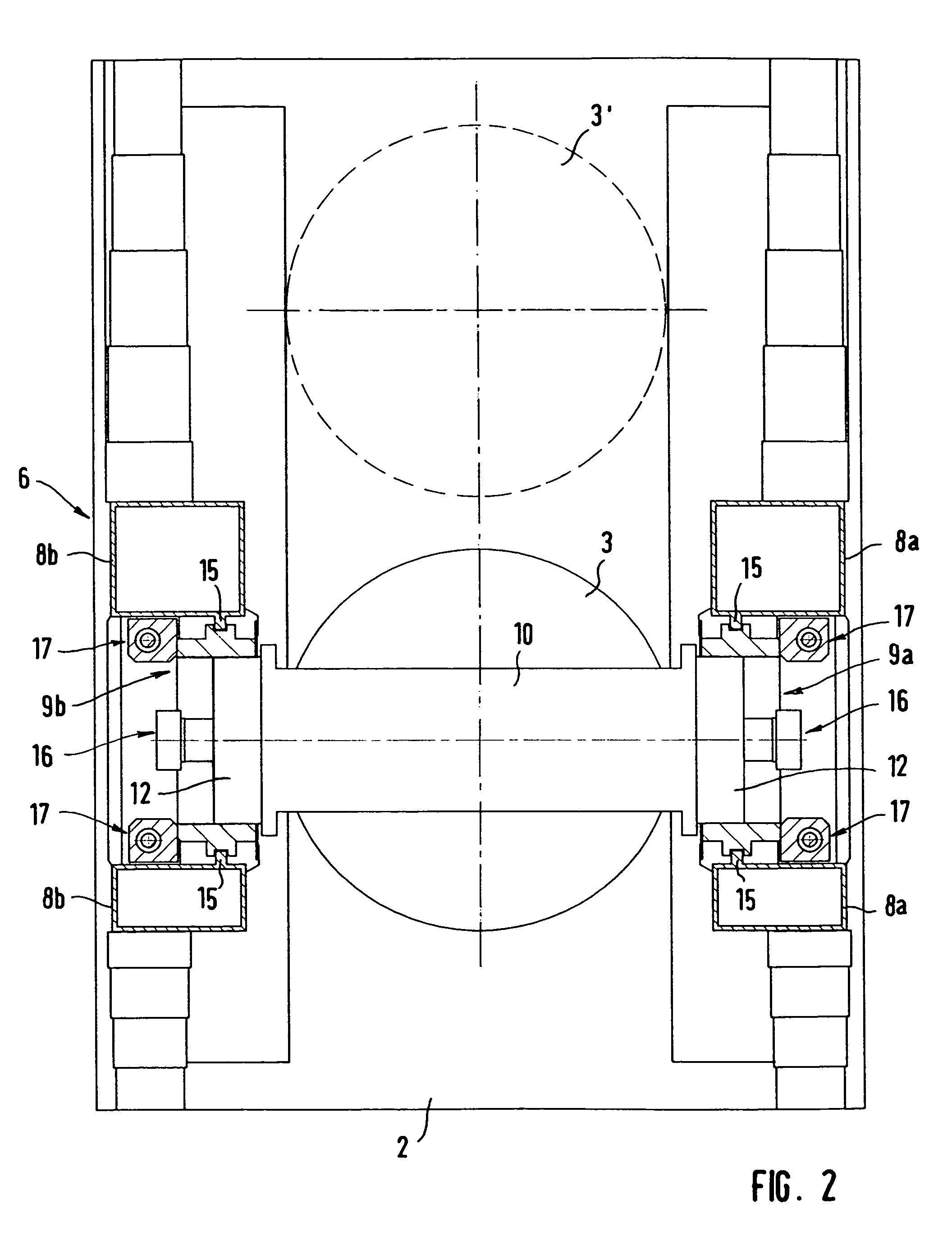[0005]It is therefore an object of the invention to indicate an ECM machine, which permits flexible machining even of different workpieces of different geometry with, at the same time, a high machining accuracy.
[0012]The inventive ECM machine is distinguished by the use of a portal, at which a transverse girder is disposed vertically movably and, in turn, carries the cathodes. A symmetrical construction is realized. The vertical guidance of the horizontal girder leads to maximum stiffness and, at the same time, minimizes thermal effects. At the same time, long traveling paths can be achieved. Because of the different axes and mobilities, which have been provided, it is also possible to machine workpieces with complicated spatial shapes. As described, the workpiece itself is disposed at a revolving table, which can be rotated about a
vertical axis. The portal can be shifted horizontally with respect to table and, with that, with respect to the workpiece. The cathodes themselves can also be moved vertically with respect to the workpiece. The portal can be moved horizontally with respect to the table and, with that, with respect to the workpiece. The cathodes themselves can also be moved vertically with respect to the workpiece and can be rotated into any angular position because of the rotatable arrangement of the transverse girder about a
horizontal axis. One or two further movement axes may furthermore be realized owing to the fact that the two cathodes can be moved jointly at a common horizontal guide or that each
cathode can be shifted separately at a horizontal guide at the transverse girder. Alternatively, in the case of simpler objects, it is also conceivable to provide, instead of the cathode guides at the transverse girder, only one clamping device for a mold, namely when a horizontal movement in this area is not required. Alternatively, it is, of course, also conceivable to dispose the clamping device itself horizontally movably at the transverse girder.
[0013]On the whole, because of the relative mobility of the individual elements with respect to one another, the inventive ECM machine offers a high degree of flexibility with respect to the mobility of the parts and permits parts of different geometry (cylindrical, prismatic, polygonal, panel-shaped or disk-shaped, etc.), to be machined. Moreover, because of the construction of the portal, maximum stiffness and, with that, extremely high accuracy are ensured. Advantageously, the accuracy and positioning problems, resulting from the “open” construction of the aforementioned state of the art, do not arise in the case of the inventive machine. A further
advantage is the good
accessibility to the working area, since, because of the horizontal mobility of the whole portal, at which the working components are provided, the revolving table and, with that, the workpiece
mount are easily accessible. This means that, because of the long portal traveling path that can be realized, the workpiece is a readily accessible. The corresponding applies also for the workpiece cathodes, which, with appropriate positioning of the portal remote from the revolving table, are also readily accessible, so that an exchange is possible very easily here as well as at the revolving table.
[0015]In the event that a workpiece carrier with an integrated,
horizontal axis of rotation is provided, an advantageous further development of the invention provides for configuring said workpiece carrier so that the workpiece can be displaced linearly along the horizontal axis of rotation. This configuration makes it possible to clamp and machine rotors with several rows of blades, so-called multiple blisks. Because of the linear displaceability, it is possible to position the
vertical axis of each of the blade rows, which are to be processed and are aligned with the axis of rotation of the table, in order to be able to load the cathodes, for which purpose, because of the fact that the blade shape is wound in itself, the revolving table must be rotated somewhat during the loading motion. With this configuration of the invention, the spectrum of work can be enlarged even further.
[0022]Even though they are not described in greater detail, measurement sensors for accurately determining the path of the rotational or longitudinal driving mechanisms, the movement of which is numerically controlled and which can be triggered separately, are of course provided at the machine and placed or integrated at the appropriate site.
Signal leads are also always placed so that they do not ever interfere either during the actual machining operation or within the scope of other movements.
 Login to View More
Login to View More 


